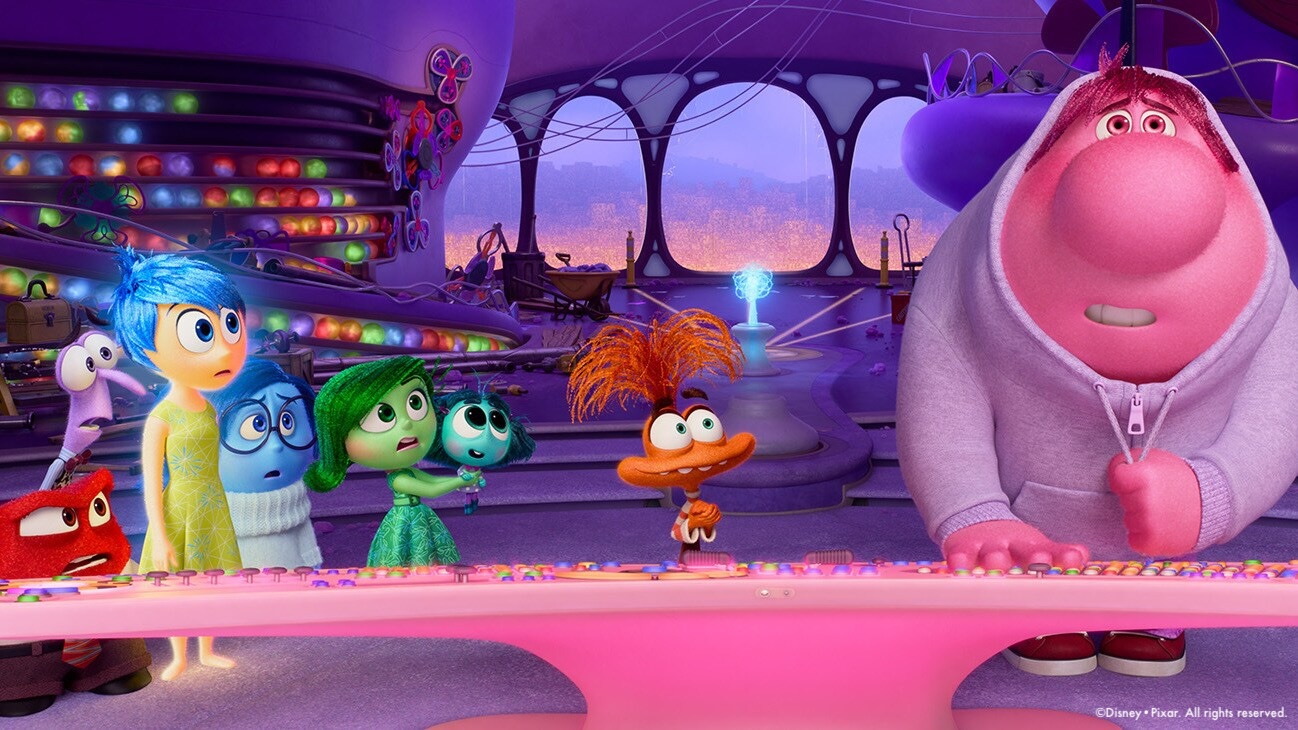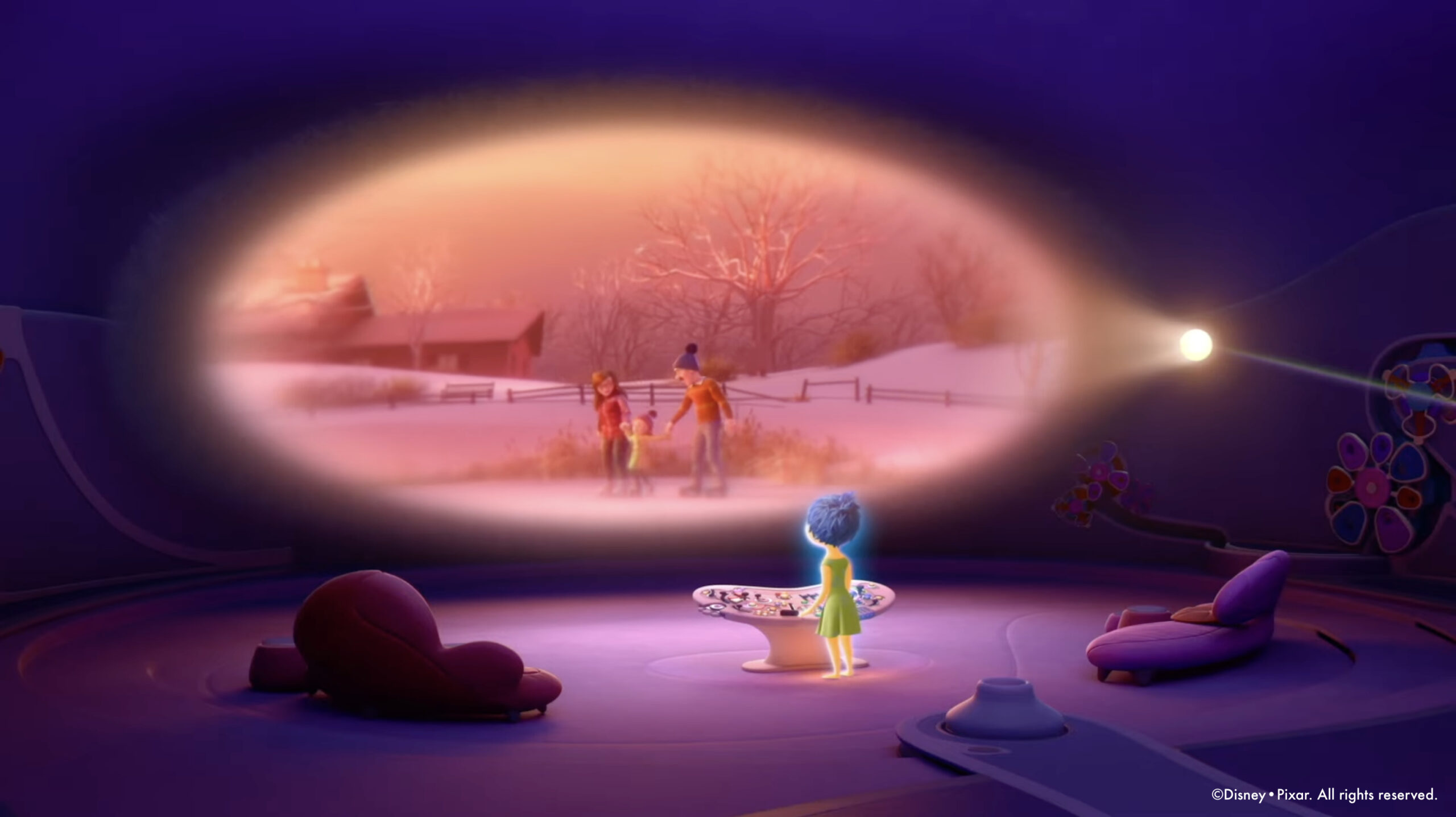Spoiler Alert: This post will discuss characters, scenes, and plot points from Disney•Pixar’s “Inside Out 2”
In Disney/Pixar’s “Inside Out 2”, the main character Riley has just turned 13 and is entering her tween years. We get to see Riley’s emotional world inside her brain and what is happening through her memories. The movie begins with Riley playing hockey with her two best friends and feeling tremendous joy. She is a team player who makes good decisions and supports the team in winning the games. She is a bright, shining star on the team. The hockey coach from the high school team sees potential in the three girls, and asks Riley and her friends if they would like to join the upcoming hockey camp, which is an honor, and all the girls get excited.
In the car on the way to camp, Riley’s friends tell her they will not be attending the same high school as her in the fall. Riley’s idyllic world shatters in a moment and has a profound emotional impact on her. She is triggered by an earlier childhood event at age eleven, when her father was transferred out of state for another job, uprooting her sense of safety and security in the world. Riley has been able to rebuild her life since that event, eventually making new friends and continuing to do what she loves – hockey.
When Riley’s friends announce the disturbing news of going to a different high school, Riley puts on a brave face, trying to say nothing is bothering her; all the while inside, she is being triggered in the present, reacting to her world instantly changing to what was known, secure and safe, to the unknown, scary and painful. Her emotional state taps into the familiar characters from Part 1 – Joy, Anger, Fear, Sadness, and Disgust – whose job is to help Riley navigate her feelings in different situations.
Joy is the leader, Riley’s core emotional driver, trying to keep Riley happy and developing a positive sense of self, “I am a good person.” These emotions are pure and happen in real-time, in the present moment. For years, Joy continuously discards the uncomfortable, awkward, or unresolved life events every night – Riley’s and Joy’s perceived failures, mistakes, and mishaps – to keep Riley feeling only what is good and successful. In doing so, Riley is not downloading the more challenging and unresolved life events into long-term memory to learn from, driven by Joy’s intention of protecting Riley from uncomfortable feelings. Trying to deny all uncomfortable moments and memories that don’t bring joy in one’s life does not necessarily bring joy itself. Instead, it prevents one from experiencing moments of resilience, fortitude, and character.
Riley now has more complicated emotions that are getting activated being a tween – Anxiety, Envy, Embarrassment, and Ennui. The original core emotions — Joy, Sadness, Anger, Fear, Disgust — have always been reactive in the moment. Driven mainly by Anxiety’s baggage of unresolved life moments, these new emotions try to anticipate Riley’s future needs and typically focus away from the moment. The familiar core emotions (Joy, Sadness, Anger, Fear, Disgust) are overtaken by these newer, unfamiliar ones, taking over Riley’s experiences. As Riley becomes triggered, Anxiety begins to take over, pushing Joy and the other emotions aside. Intending to keep Riley safe from all possible future harm, Anxiety sets up an alarm system to look out for any potential awkward social interactions that could lead to any possible calamity. Anxiety becomes obsessed with examining every worst-case scenario and finding every possible way to mitigate how to handle these scenarios, all intending to ensure Riley will be safe, happy, and popular in the next four years.
The more Anxiety tries to control everything, the more Anxiety makes Riley feel like she isn’t doing enough, isn’t trying enough, that she has to do more and more and more, which eventually leads to a new core belief, “I’m not good enough.” Riley’s sense of self and thought process change by adding conditions to her beliefs about herself. “I will be good enough if I make the team, walk the right way, like what they like, and make three goals.” As these conditional statements increase, Riley’s sense of “I am a good person” begins to be silenced and replaced with “I am not good enough.”
As Riley begins to become more anxious, her trauma response takes over. She begins to have maladaptive trauma behaviors that are out of character for her. She is ruminating at night, making it hard to sleep; she ignores the advice from her varsity idol to rest and take it easy; she pushes her friends away in order to be accepted by new kids; she becomes sarcastic in her interactions to sound as if she doesn’t care if she is accepted, creating an emotional chasm between her and her friends; she even breaks into the coach’s office to see if she will be on the team. None of these behaviors are natural to Riley; instead, they have developed from a place of “not being good enough.” The old emotions she felt for years are being pushed away and suppressed, leaving her with these new confusing emotions and beliefs contributing to her behaviors.
Her adaptive memories are becoming harder and harder to access. The resources she typically relies on do not support her during this time; her family, friends, and sense of integrity are not helping her navigate these more complex situations and relationships.
Joy sees what is happening to Riley as Anxiety pushes Riley’s sense of self, “I’m a good person,” farther away. Anxiety is gaining more and more power over Riley, silencing Riley’s sense of goodness while increasing the feeling of not being good enough. Joy desperately wants to help Riley connect to her core sense of goodness but sees that helping Riley is daunting. Joy realizes she needs help from the other emotional characters to help her find and restore Riley’s sense of goodness, and she sends Sadness to go back to the control station to try and help Riley in a different way.
While this is happening, Riley is at a crossroads with her struggles. At her core, she is a good person, while Anxiety continues to fuel Riley’s sense of not feeling good enough. In this back-and-forth pull, Sadness comes in to help Riley. Sometimes, feeling sad is exactly what needs to happen: letting people know, “I need help, and I can’t do this alone.” Anxiety feels threatened by Sadness and pushes Sadness away so that Riley cannot access that emotion.
As Anxiety continues to take over the control station, the anxious feelings build until Riley is out of control trying to score a goal at the cost of hurting one of her friends. As Riley enters the penalty box for her actions, she is more concerned about not making the goal than how her friend is doing. The coach, the players, and all her friends stare at Riley in confusion. Her friends are dismayed by Riley’s behavior because she is not acting like the person they have grown to know and love. Riley’s world begins to spiral out of control into an anxiety vortex, where her breathing becomes shallow and rapid, her heart rate increases, and she is no longer aware of her surroundings until she has a full-on panic attack.
Meanwhile, Joy discovers that trying to protect Riley from unprocessed, uncomfortable, unpleasant, unresolved memories and beliefs is not the answer. These unresolved beliefs and memories piled up into a mountain of unprocessed emotional sore spots that can easily be triggered in the present. When something is triggering, the brain accesses the past unresolved memory and activates it in the present. We can behave, act, and feel like the past is happening now. These memories can become isolated neural networks, making it difficult to access the positive, more adaptive memories that help regulate what is happening in the present moment. Maladaptive behaviors can take over, creating sleep disturbances, losing empathy for others, being in denial of what is occurring, and even bringing on panic attacks. We can lose our sense of being present, and the unresolved trauma can even start to shape our personalities in maladaptive ways. All of this happened to Riley in a very short period of time.
Joy tries to get Riley’s sense of self, “I’m a good person,” back in the control station and find a way to get rid of Anxiety, who has created chaos in Riley’s life. As Joy observes what is happening to Riley’s sense of self, she realizes that getting rid of Anxiety and only sensing Joy is not the solution. Riley needs all her emotions and memories to help her, not just the good feelings and memories. Riley’s sense of self can now develop from experiencing good and happy events along with her failures, mistakes, and mishaps, essential in building one’s fortitude and character in handling new and challenging situations.
When Riley starts accepting all of her feelings, memories, and core beliefs, Anxiety is calmed, and the panic decreases. The process of acknowledging uncomfortable feelings, like anxiety, allows anxiety to transform and become more adaptive. Instead of trying to control every possible worst-case scenario, we sometimes need to let go, let life happen, and then ride the waves of emotions to learn what we need to learn while honoring every memory and emotion.
When Riley shares the truth of what she is going through with her friends, she feels lighter, more at ease, and more herself – able to reconnect to Joy. She sees that she is not alone even though she felt alone. By taking the risk of sharing what she was going through, her emotions become validated, and in turn, she feels relief, bonding with her friends again, bringing her back to a feeling of homeostasis. Instead of letting her emotions define her, Riley lets her emotions be okay without judging them as right or wrong. They are there to help her move with and through whatever she is experiencing.
Overall, Riley’s experience of a trigger set off a trauma response that flooded her system with emotions unfamiliar to her, which she was unequipped to handle. By the end of the movie, we see Riley skating freely, reconnecting to a pure sense of joy without any conditions. She can experience the pure joy of skating, just like in Part 1, where she was skating on the pond, feeling freedom in her body, and being carefree in the moment.
With the support from her friends, family, team, and coach, Riley may move through this chapter in her life at hockey camp without any lasting negative impact on her and her sense of self. But for some people who may go through something similar, if they don’t have a good enough support system, they may experience this event as a trauma that can fester in like a sore spot for years to come and influence the development of their sense of self maladaptively over time. In those cases, EMDR therapy may be helpful in processing unresolved trauma to help build fortitude and resiliency.
If you or someone you know has experienced something traumatic and are not able to process it, professional help may be necessary. Consider searching our EMDR Therapist Directory to find qualified EMDR therapists who can help you determine if EMDR therapy may be helpful to you.
Find an EMDR Therapist What is EMDR Therapy?
Related EMDR Therapy Blog Posts:
- The Story of Overcoming Trauma in Disney/Pixar’s ‘Inside-Out’
- Top 5 EMDR Books for Treating Children
- Sandra Bullock’s Portrayal of Trauma and Grief in “Gravity”
- What “Buck,” the Horse Whisperer, Can Teach Therapists About Preparing Clients for Trauma Work
Disney•Pixar’s “Inside Out 2” — Official Trailer
Disney•Pixar’s “Inside Out ” — Riley’s Ice Skating Dream
Images Source: © Disney•Pixar. All rights reserved.







